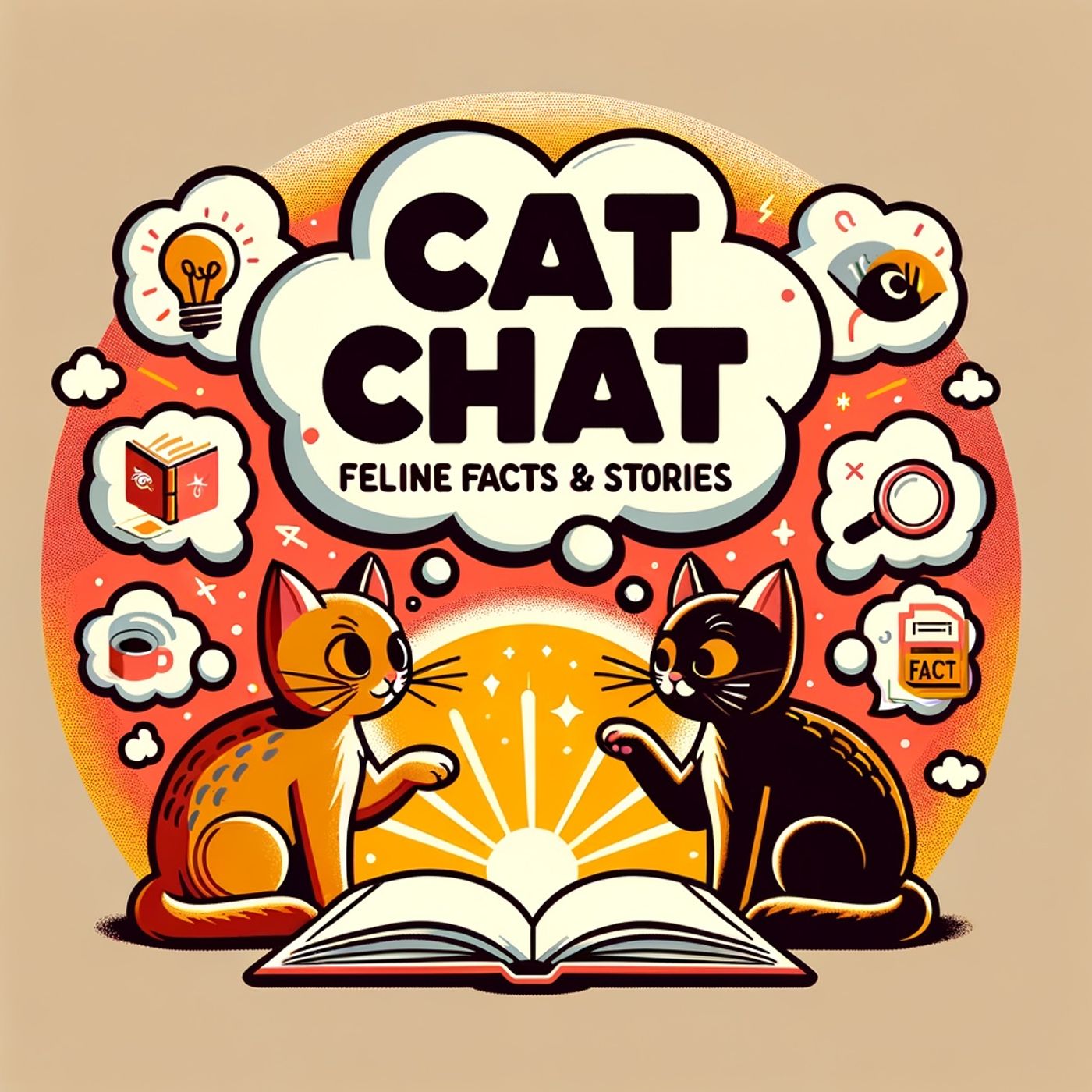Cracking the Feline Code: Deciphering Cats' Subtle Communication
Update: 2025-10-12
Description
Welcome to Cat Chat, where feline facts and stories take center stage. Today, listeners are getting a closer look at the mysterious language of cats, those fluffy companions who love to keep us guessing.
Every cat owner knows the classic meow, but according to PetMD, cats meow far more often to humans than to each other. When communicating with fellow felines, cats rely on a complex blend of body language, subtle vocalizations, and chemical signals. Imagine a silent feline ballet, with every tail flick, every ear swivel, speaking volumes.
The tail is like a furry semaphore flag. A tail held high shows happiness or a friendly greeting, while a rapidly swishing tail means a cat is agitated or excited. If that tail puffs up, the cat is frightened or trying to look larger in the face of a threat. According to the Cat Care Society, a hooked tail tip reveals cautious optimism, while a tail tucked low signals anxiety or submission.
Ears are another clue in decoding kitty mood. Forward-facing ears mean curiosity and engagement. “Airplane ears,” flattened and turned sideways, are a sign of irritation, fear, or anger. The Humane Society points out that swiveling ears mean a cat is alert and listening to every sound in the room.
Eyes might be the windows to the feline soul. Wide, round eyes often mean excitement or surprise. Dilated pupils indicate play, nervousness, or aggression, depending on the situation. If a cat gives a slow blink, that's pure cat affection—return the gesture to say you love them too.
Cats are masters of the silent signal, but sometimes they raise their voice. Trilling and chirping are ways cats greet or invite play. Growling, hissing, and spitting are warnings, according to PetMD. Purring can mean contentment, but during tense feline encounters, it can also be a signal of peaceful intentions to prevent conflict.
Scent also serves as a secret feline text message. Cats rub their faces and bodies on objects and people to deposit pheromones, marking territory or leaving comfort scents for friends. PetMD explains that urine spraying is a form of marking identity or sexual status, especially in unneutered males—a little less charming, but an honest part of cat society.
In multi-cat households, you might notice allogrooming, or one cat licking another. According to PetMD, this isn’t just about hygiene—it’s a bonding ritual that shows trust and strengthens social bonds between cats.
Whether a cat is kneading with its paws, slow-blinking from a sunny window, or giving a friendly head bunt, every movement is a message. As Four Paws details, learning to observe these small signs is the key to understanding the feline world.
Thanks for tuning in to Cat Chat, the purrfect place for facts and feline stories. Don’t forget to subscribe for more whisker-twitching tales. This has been a quiet please production, for more check out quiet please dot ai.
For more http://www.quietplease.ai
Get the best deals https://amzn.to/3ODvOta
This content was created in partnership and with the help of Artificial Intelligence AI
Every cat owner knows the classic meow, but according to PetMD, cats meow far more often to humans than to each other. When communicating with fellow felines, cats rely on a complex blend of body language, subtle vocalizations, and chemical signals. Imagine a silent feline ballet, with every tail flick, every ear swivel, speaking volumes.
The tail is like a furry semaphore flag. A tail held high shows happiness or a friendly greeting, while a rapidly swishing tail means a cat is agitated or excited. If that tail puffs up, the cat is frightened or trying to look larger in the face of a threat. According to the Cat Care Society, a hooked tail tip reveals cautious optimism, while a tail tucked low signals anxiety or submission.
Ears are another clue in decoding kitty mood. Forward-facing ears mean curiosity and engagement. “Airplane ears,” flattened and turned sideways, are a sign of irritation, fear, or anger. The Humane Society points out that swiveling ears mean a cat is alert and listening to every sound in the room.
Eyes might be the windows to the feline soul. Wide, round eyes often mean excitement or surprise. Dilated pupils indicate play, nervousness, or aggression, depending on the situation. If a cat gives a slow blink, that's pure cat affection—return the gesture to say you love them too.
Cats are masters of the silent signal, but sometimes they raise their voice. Trilling and chirping are ways cats greet or invite play. Growling, hissing, and spitting are warnings, according to PetMD. Purring can mean contentment, but during tense feline encounters, it can also be a signal of peaceful intentions to prevent conflict.
Scent also serves as a secret feline text message. Cats rub their faces and bodies on objects and people to deposit pheromones, marking territory or leaving comfort scents for friends. PetMD explains that urine spraying is a form of marking identity or sexual status, especially in unneutered males—a little less charming, but an honest part of cat society.
In multi-cat households, you might notice allogrooming, or one cat licking another. According to PetMD, this isn’t just about hygiene—it’s a bonding ritual that shows trust and strengthens social bonds between cats.
Whether a cat is kneading with its paws, slow-blinking from a sunny window, or giving a friendly head bunt, every movement is a message. As Four Paws details, learning to observe these small signs is the key to understanding the feline world.
Thanks for tuning in to Cat Chat, the purrfect place for facts and feline stories. Don’t forget to subscribe for more whisker-twitching tales. This has been a quiet please production, for more check out quiet please dot ai.
For more http://www.quietplease.ai
Get the best deals https://amzn.to/3ODvOta
This content was created in partnership and with the help of Artificial Intelligence AI
Comments
In Channel





